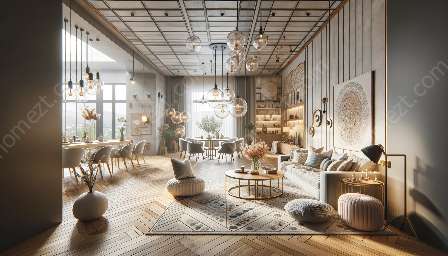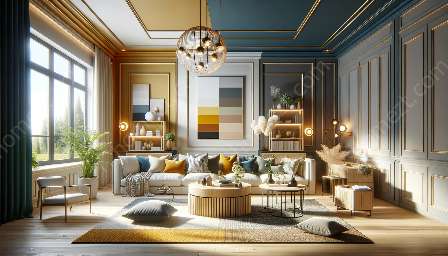Color psychology delves into the effects and influences of different colors on human behavior, emotions, and mental well-being. It explores the profound symbiosis between color theory and design aesthetics, thereby shaping the ambiance and character of interior spaces.
The Fundamentals of Color Psychology
Color psychology, a branch of behavioral psychology, investigates the significance of various colors and their impact on individuals. It emphasizes the role of colors in eliciting specific emotional responses and influencing cognitive processes. Understanding the psychological associations of colors enables designers and homeowners to create harmonious and emotionally engaging environments within their living spaces.
Color Theory and Its Application in Home Furnishings
Color theory acts as the foundation for understanding the principles of combining and harmonizing colors to evoke desired emotional responses. By incorporating these principles into home furnishings and interior design, individuals can create cohesive and visually appealing living spaces. Color theory encompasses concepts such as the color wheel, complementary and analogous color schemes, and the psychological effects of warm and cool hues, empowering designers to invoke specific moods and atmospheres within a room.
The Impact of Colors on Home Settings
Each color holds distinct psychological implications, influencing perceptions, emotions, and behaviors. For instance, serene blues and greens are often associated with tranquility and relaxation, making them ideal choices for bedrooms and lounging areas. Vibrant reds and yellows can stimulate energy and foster sociability, suitable for dining or gathering spaces. Understanding these nuances of color psychology aids in aligning home furnishings and decor with the desired atmosphere and purpose of each room.
Implementing Color Psychology in Home Furnishings
When selecting furnishings and decor, incorporating color psychology allows individuals to craft personalized, emotionally resonant spaces. By integrating the appropriate colors, tones, and contrasts, one can create a cohesive and harmonious interior design that reflects their individuality and enhances the overall well-being of its occupants.
Conclusion
Color psychology forms an integral aspect of home furnishings and design, transcending mere aesthetic appeal to deeply influence the emotional and psychological experiences of individuals within their living spaces. By merging color theory with an understanding of psychological responses to color, homeowners and designers can curate environments that promote comfort, harmony, and well-being, offering an immersive and enriching experience within the homes they create.



